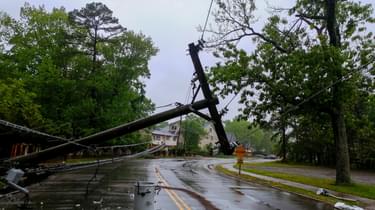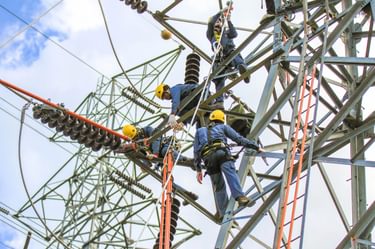
Welcome Urbint: Safeguarding Workers, Grids, and Communities

The combination of extreme weather events and aging infrastructure poses a major threat to grid reliability and public safety as experienced in recent hurricanes such as Beryl, Helene, and Milton as well as winter storms in the Midwest and Northeast earlier in the year. From our perspective, there’s an opportunity for technology and innovation to support utilities in increasing their grid resiliency and enhancing public safety.
We are proud to announce our recent investment in Urbint, an AI-powered operational risk platform for energy and utility companies that identifies and mitigates threats to workers, critical infrastructure, and communities.
Urbint was founded on the idea that by combining data about the natural and built environment with artificial intelligence and industry science, we could more efficiently and accurately predict and prevent incidents that threaten critical infrastructure, workers, the community, and the environment. This intelligence is integrated into core operations across maintenance, construction, and emergency response efforts. Urbint helps utilities restore power faster during major weather events, reduce serious injuries and fatalities, and prevent damage to underground assets, ultimately increasing resiliency and protecting the public.
Urbint has three distinct offerings focused on worker safety, damage prevention, and storm response. Urbint’s storm response system helps utilities coordinate and execute emergency response measures and fast-track the process of getting grids back online and operational.

A Rise in Extreme Weather Events
One of the devastating and already prevalent impacts of climate change is the increase in extreme weather events. Climate change is worsening the impact of hurricanes in the U.S. by increasing their intensity and decreasing their speed. Research suggests that the most damaging U.S. hurricanes are three times more frequent than 100 years ago, and the proportion of major hurricanes (category 3 or above) in the Atlantic Ocean has doubled since 1980. The intensity of tropical cyclones has also increased over the past 30 years. All these storms amount to significant costs. As of November 1, there have been 24 confirmed billion-dollar weather and climate disaster events in the U.S. this year.
This rise in extreme weather is putting immense pressure on utilities that are struggling to update aging infrastructure and stretch limited resources to respond to these events. Weather-related power outages are on the rise, with the U.S. experiencing 74 percent more storm-related power outages in the last ten years than in the decade before. Extreme weather is the number one cause of major power outages in the U.S., and in some parts of the country, the risk of hurricane-induced power outages could become 50 percent higher in the coming decades. A McKinsey study found that a typical utility saw $1.4 billion in storm damage costs and lost revenues due to outages caused by storms over a 20-year period and that by 2050, the cost of damages and lost revenues would rise by 23 percent.

Bringing Disaster Response Up to Speed
We believe the impacts of extreme weather events are compounded by the utility’s challenge to respond efficiently and effectively. Following an extreme weather event, utilities usually have to contact other emergency response teams around the country to check availability and pricing and then consolidate a plan to manage these crews and get them to areas of high sensitivity. To manage this storm response process, utilities too often fall back on legacy habits like using paper, pens, printed maps, and spreadsheets, which create significant inefficiencies leading to delayed grid restoration.
Urbint’s AI-powered storm response system integrates the entire storm and natural disaster lifecycle into one holistic solution so utilities can handle logistics, manage emergency work, and allocate resources in real-time. Urbint’s platform enables utilities to launch an RFP to crews around the country simultaneously and then standardizes availability and cost, meaning what used to take a few days to coordinate can take a matter of minutes. The platform also enables utilities to track crew locations, optimize resource distribution, and manage crew lodging and meals. Urbint has been able to reduce power restoration time by coordinating resources more efficiently. With fewer handoffs and greater transparency, Urbint helps ensure that utilities can quickly and effectively restore services.
Urbint works with some of the country’s largest utilities, including Southern Company, Exelon, and National Grid. The $35 million strategic investment led by S2G will help enable Urbint to further develop its safety and resiliency solutions for utilities. We look forward to continuing to work with Urbint to improve grid uptime and safety while transforming how utilities manage risk and adapt to climate change.

